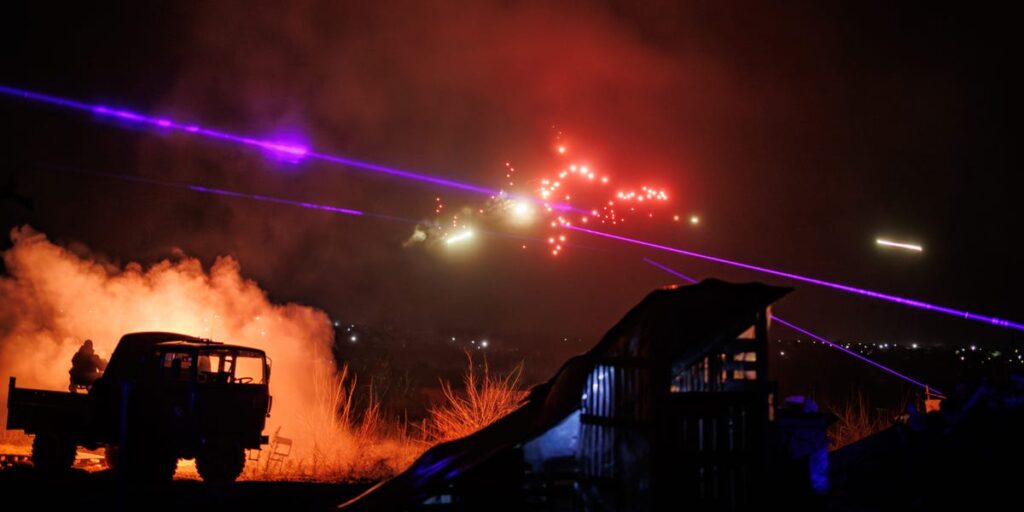Russia’s growing reliance on mass attacks with Iranian Shaheds has given way to a new tactic, where Moscow sends the exploding drones hurtling down from high altitudes.
“The current Russian tactic boils down to constantly changing UAV routes and trying to launch them at high altitudes — over 2 kilometers above the ground,” Yurii Ihnat, the lead spokesperson for Ukraine’s air force, told local media outlet RBC Ukraine in an article published on Tuesday.
“Then they dive straight down at the target,” Ihnat added.
While Ihnat didn’t specifically name the Shahed, the Iranian-designed munition has been Russia’s main drone for bombarding Ukrainian cities from afar.
The spokesperson said high-altitude maneuvers mean the drones are more easily detected on radars but fly out of range of small arms fire.
That’s a problem for part of Ukraine’s air defenses, which deploy mobile fire groups with vehicle-mounted heavy machine guns to shoot down Shaheds as they approach.
Ukrainian units now say the one-way drones are flying higher and faster, making them far harder to hit. Some reported modifications to the Shahed have increased its known top speed from 115 to 180 miles per hour.
As a result, one mobile fire group team leader told Business Insider’s Jake Epstein last week, Ukrainians must start relying more on shoulder-launched surface-to-air missiles, also known as MANPADS.
It’s all part of Russia’s strategy to use Shaheds to exhaust Ukraine’s air defenses, including Ukrainian electronic warfare and surface-to-air missiles.
Launches of the Shahed have risen sharply over the last year, with Russia often sending hundreds at a target in one night to overwhelm Ukrainian air defenses. They’re combined with waves of long-range missile strikes, making the night attacks even deadlier and more difficult to mitigate.
Some of the launched Shaheds are cheaper versions without warheads that serve as decoys. Ihnat estimated to RBC Ukraine that for every 100 drones sent to Ukraine, about 40 are usually decoys.
Shaheds are slower and typically less powerful than cruise or ballistic missiles, but they cost less, at about $20,000 to $50,000 per drone. Even lower-end air defense missiles, like the medium-range interceptor fired from the Soviet Buk-M1, can cost about $300,000 each.
The US-made Patriot missile system, of which Ukraine is believed to have about six to eight, fires interceptors that can cost up to $4 million each.
That cost disparity has fueled Moscow’s push to build Shaheds locally and send them in waves, often at civilian infrastructure.
Analysts from the Center for Strategic & International Studies reported that the number of Shahed launches rose from an average of 130 a week in September to 1,100 weekly launches this spring.
Meanwhile, Ukrainian intelligence said in February that Russia has begun developing a new version of the Shahed that can fly at speeds of up to 372 miles per hour and has a range of 1,550 miles.
The Ukrainian and Russian defense ministries did not respond to requests for comment sent outside regular business hours by BI.
Read the full article here


